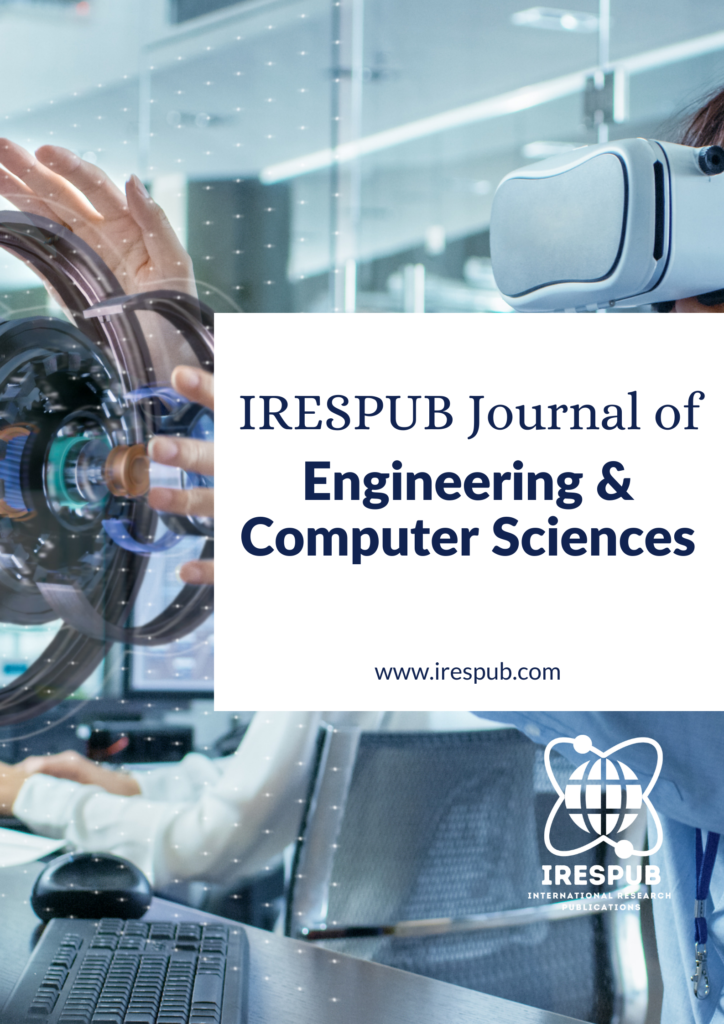
Year Launched: 2021
Journal Menu
- Scope & Research Areas
- Instructions for Authors
- Article Processing Charge
Journal List
- Natural & Applied Sciences
- Life Sciences
- Business Management
- Education & Literature
- Humanities & Cultural Studies
- Medical & Dental Sciences
- Engineering & Computer Sciences
- Agriculture, Food & Nutrition
- Environmental & Material Sciences
- Wellness & Lifestyle Management
- Arts & Ideas
- Law, Policy & Religion
Implicit K-step Adams-type second - derivative block hybrid methods for the solution of stiff initial value problems in ordinary differential equations
Volume 2, Issue 1, Jan-Feb 2022 | Page 10-24 | PDF (381K) | Pub. Date: February 5, 2022
Author(s)
Donald, J. Z.; Department of Mathematics, Adamawa State University, Mubi, Nigeria
Abstract
In this paper, we developed a new continuous K-step Adams-Type second-derivative block hybrid methods, using the approach of collocation of the differential system and interpolation of the Taylors series approximate solution at some selected points to get a continuous linear multistep method, which was evaluated at two off-grid points to generate the continuous hybrid linear multistep methods which were evaluated at non-interpolated step points to give CBM’s. The K-step methods were augmented by introducing two off-step points to circumvent the Dahlquist zero barrier and upgrade the order of consistency of the methods. Hence, the basic properties of the methods were investigated and found to be consistent, zero-stable, and convergent. The new methods were tested on stiff and highly stiff equations, the results were found to compete favorably with the existing methods in terms of accuracy and error bound.
Keywords
K-step Adams-Type; second-derivative block hybrid methods; collocation; interpolation; and stiff and highly stiff equations; non-interpolated
Cite this paper
Donald, J. Z. (2022), Implicit K-step Adams-type second – derivative block hybrid methods for the solution of stiff initial value problems in ordinary differential equations, IRESPUB Journal of Engineering & Computer Sciences. Volume 2, Issue 1, Jan-Feb 2022, Page 10-24
References
[1] Abdelrahim, R., and Omar, Z. (2016). Direct Solution of Second-Order Ordinary Differential Equation using a single-step Hybrid Block Method of Order Five. Mathematical and Computational application, 12(2): 12-18.
[2] Abhulimen, C.E., and Aigbiremhon, A. (2018). Three-Step Block Method for Solving Second Order Differential Equations. International Journal of Mathematical Analysis and Optimization: Theory and Applications, 364-381.
[3] Althemai, J.M., Skwame, Y, & Donald, J.Z., (2018) Multiple Off-Grid Hybrid Block Simpson’s Methods for Solution of Stiff Ordinary Differential Equations. International Journal of Science and Research, vol.5. 1104-1109.
[4] Adeniran, A. O., & Ogundare, B. S. (2015). An efficient hybrid numerical scheme for solving general second order initial value problems (IVPs). International Journal of Applied Mathematical Research, 4(2): 411-419.
[5] Adesanya, A. O., Sunday, J. & Momoh, A.A. (2014). A new numerical integrator for the Solution of general second order ordinary differential equations. International Journal of Pure and Applied Vol. (97):431-445
[6] Adeyefa, E. O., Joseph, F.L & Ogwumu, O.D. (2014). Three-Step Implicit Block Method for Second Order Odes. International Journal of Engineering Science Invention. Vol. (3):34-38
[7] Akenfenwa, O. A., Abdulganiy, R. I., Akinnukawe, B. I., Okunuga, S. A. & Rufai, U. O. (2017). Continuous L-stable multiderivative Hybrid Implicit Runge-Kutta Method of Order five for the integration of stiff problem. International Journal of Managemen and Applied Science, 3(1): 140-145.
[8] Areo, E. A., & Rufai, M. A., (2016). A new uniform fourth order one third step continuous Block method for the direct solution of British Journal of mathematics and Computer Science, 15(4): 1-12.
[9]Awoyemi, D. O., (1995). A Two-step Hybrid Multistep Method with Continuous Coefficients for Initial value problem of General Second Order Differential Equation”Spectrum Journal, 2(1 & 2): 56-63.
[10] Badmus, A. M., (2014). An efficient seven-point block method for direct solution of general second order ordinary differential equation. British Journal of Mathematics and Computer Science, 4:2840-2852.
[11] Bakari, I. A., Skwame, Y., & Kumleng, G. M., (2018). Implicit Hybrid Block Six-Step Second Derivative Backward Differentiation Formula for the Solution of Stiff Ordinary Differential Equations. International Journal of Mathematics and Statistics Invention (IJHSI), Vol (6):3: 45-51.
[12] Butcher, J. C. (1987): The Numerical Analysis of Ordinary Differential Equation, Runge-Kutta And General Linear Methods. John Wiley & Sons
[13] Butcher, J.C, (1993). General linear methods for the parallel solution of oedinary differentials in world series, Applicable Analysis 2 (1993), 99-111.
[14] Butcher, J., (2003). Numerical Method for Ordinary Differential Equations. West Sussex: John Wiley & Sons Ltd.
[15] Chollom, J, P. and Jackiewicz, Z., (2003). Construction of two step Runge-kutta (TSRK) methods with large regions of absolute stability. J compt and Appl. Maths 157 (2003) pp 125-137.
[16] Chollom, J. P., Ndam, J. N., & Kumleng, G. M. (2007). On some properties of the block linear multistep methods. Sciences World Journal Vol2(No3) 26: 11-17.
[17] Dahlquist, G., (1963). A Special Stability Problem for Linear Multistep Methods BIT 3, 27-43
[18] Fatunla, S. O. (1980): Numerical Integrators for Stiff and Highly Oscillatory Differential Equations. Journal of Mathematics of Computation,34,150, 373-390
[19] Gear, C. W. (1965) Hybrid methods for initial value problems in ordinary differential equations SIAM Journals of Numerical Analysis 2, 69-86.
[20] Henrici, P. (1962). Discrete Variable Methods in ODE. New York: John Wiley & Sons.
[21] Ismail, G. A. F. & Ibrahim, I. H. (1999). New Efficient Second Derivative Multistep Method for Stiff Applied Mathematical Modeling, 24 (4): 279-288.
[22] Jator, S. N., (2001). Improvement in Adams-Moulton Methods for the First Order Initial Value Problems. Journal of the Tennessee Academy of Science, 76(2):57-60.
[23] Jackson, K.R. (1988). The convergence of integrand approximation formulas for the numerical solution of IVP’s for ordinary differential equations, Siam J. Numer. Anal. 25,1. Pp163-188.
[24] Lambert, J. D. (1991). Numerical Methods for Ordinary Differential System. John Wiley& Sons, New York
[25] Lambert, J. D. (1993). Numerical Methods for Ordinary Differential Systems: The initial value problem.John Wiley & Sons Inc, New York.
[26] Lie I and Norsett P (1989). Super convergence for the multi-step collocation. Maths. Comp. 52 pp 65-76.
[27] Onumanyi, P., Sirisena, U. W., & Chollom, J. P., (2001). Continuous Hybrid Methods through Multistep Collocation. Journal Mathematical Association of Nigerian, 58-64
[28] Onumanyi, P., Awoyemi, D. O., Jator, S. N., & Sirisena, U. W., (1994). New Linear Multistep Methods with Continuous Coefficients for First Order IVPs. Journal of Nigerian Mathematical Society, 13: 37-51
[29]Onumanyi, P., Sirisena, U. W., & Jator, S. N., (1999). Continuous finite difference Approximation for solving differential equations. International Journal of Computer and Mathematics, 72:15-27
[30] Rufai, M. A., Duromola, M. K., & Ganiyu, M. K., (2016). Derivation of One-Sixth Hybrid Block Method for Solving General First Order Ordinary Differential Equations. Journal of Mathematics (IOSR-JM). 12 (5):20-27
[31] Yakusak, N. S., & Adeniyi, R. B., (2015). A Four-Step Hybrid Block Method for First Order Initial Value Problems in Ordinary Differential Equations. AMSE JOURNALS, 52(01), 17-30.

